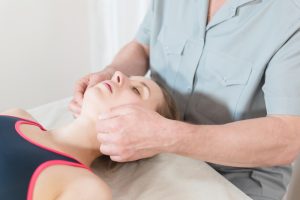Physical and Thoracic Pain
February 13, 2024
Physical therapy can be an effective treatment option for thoracic (mid-back) pain. Thoracic pain can result from various causes, such as muscle strain, poor posture, herniated discs, arthritis, or trauma. Physical therapists are trained to assess and address musculoskeletal issues, including those related to the thoracic spine.
Here are some ways physical therapy may help with thoracic pain:
Assessment and Diagnosis
A physical therapist will assess your posture, mobility, strength, and flexibility to identify the underlying causes of your thoracic pain. From that assessment we will create an individualized plan for your care.
Exercise and Stretching
Targeted exercises and stretches can help improve the strength and flexibility of the muscles surrounding the thoracic spine. Strengthening the core muscles can also provide better support to the spine.
Manual Therapy
Hands-on techniques such as massage, joint mobilization, and manipulation may be used to improve mobility and reduce pain in the thoracic spine.
Posture Education
Poor posture can contribute to thoracic pain. Physical therapists can provide guidance on proper body mechanics and ergonomic adjustments to help prevent further strain. This includes working with your seated posture at your desk or at home when relaxing at night.

example of poor posture
Modalities
Heat or cold therapy, ultrasound, electrical stimulation, and other modalities may be used to alleviate pain and promote healing.
Breathing Exercises
Thoracic pain can affect respiratory function, and specific breathing exercises can help improve lung capacity and reduce pain associated with breathing.
Patient Education
Education on self-management techniques, lifestyle modifications, and home exercises empower patients to take an active role in managing their thoracic pain.
At Witte Physical Therapy we personalize your treatment plan based on your needs and the underlying causes of thoracic pain. If you’re experiencing persistent or severe thoracic pain, it’s crucial to seek guidance from a healthcare provider for a comprehensive evaluation and appropriate treatment plan.









